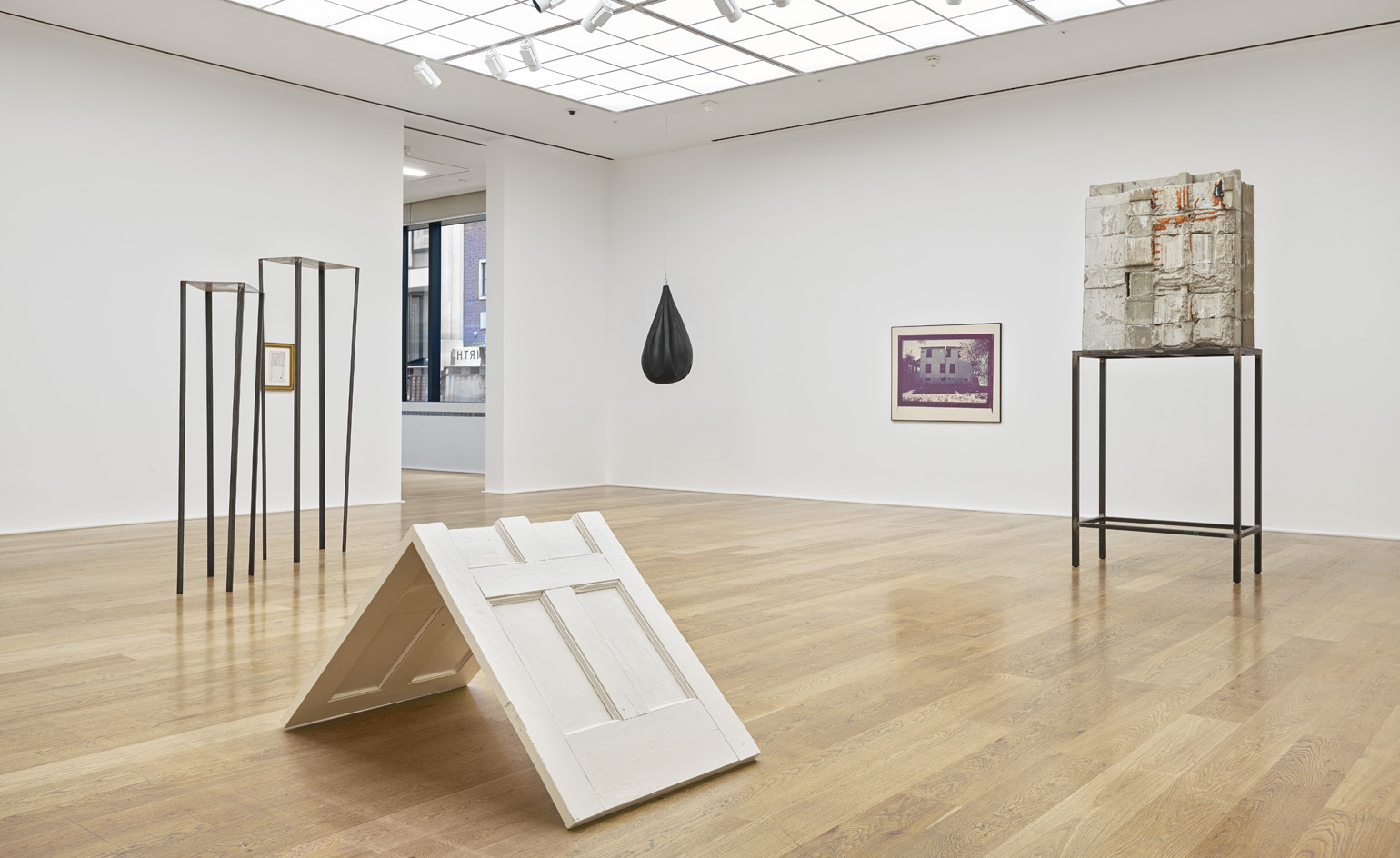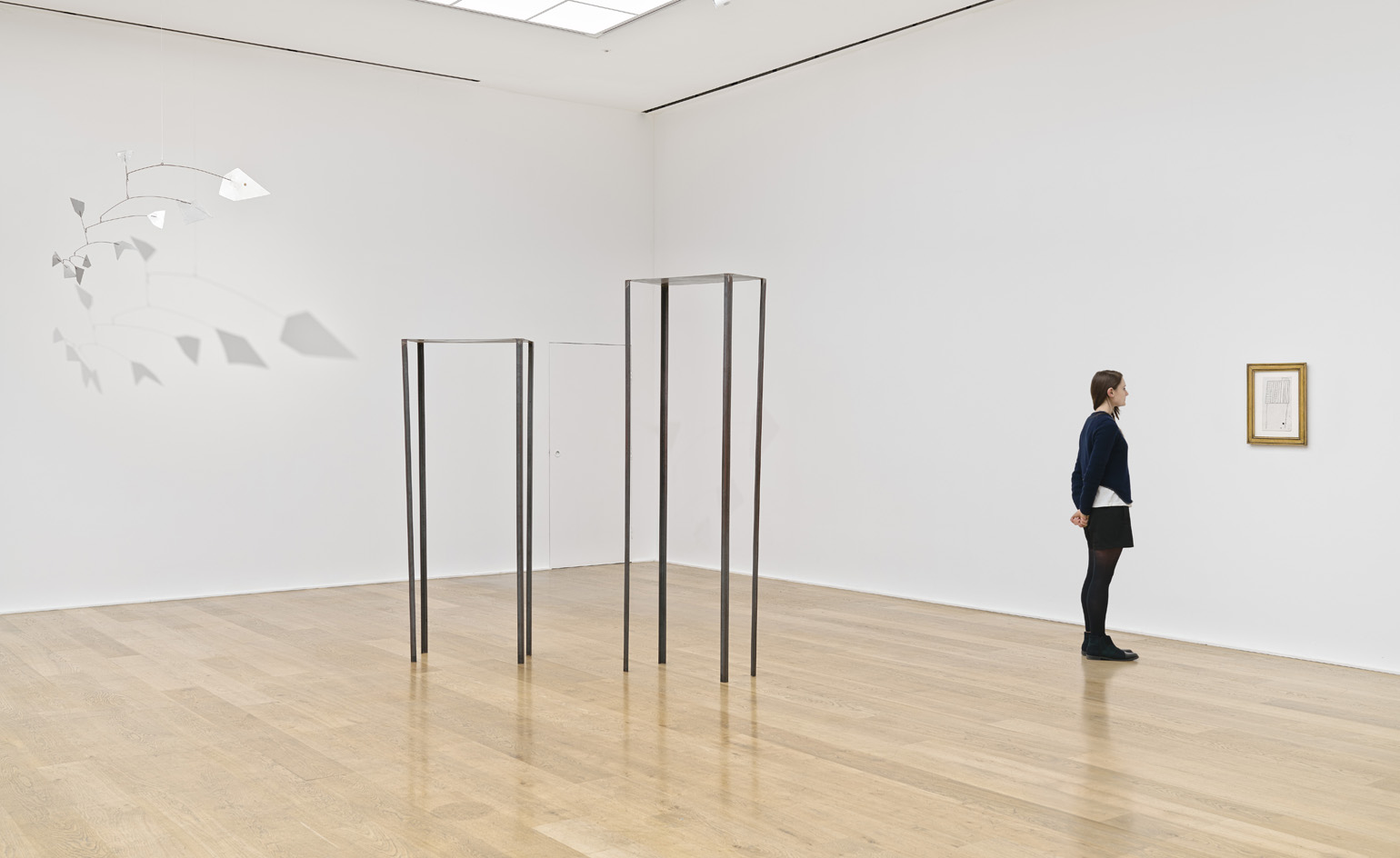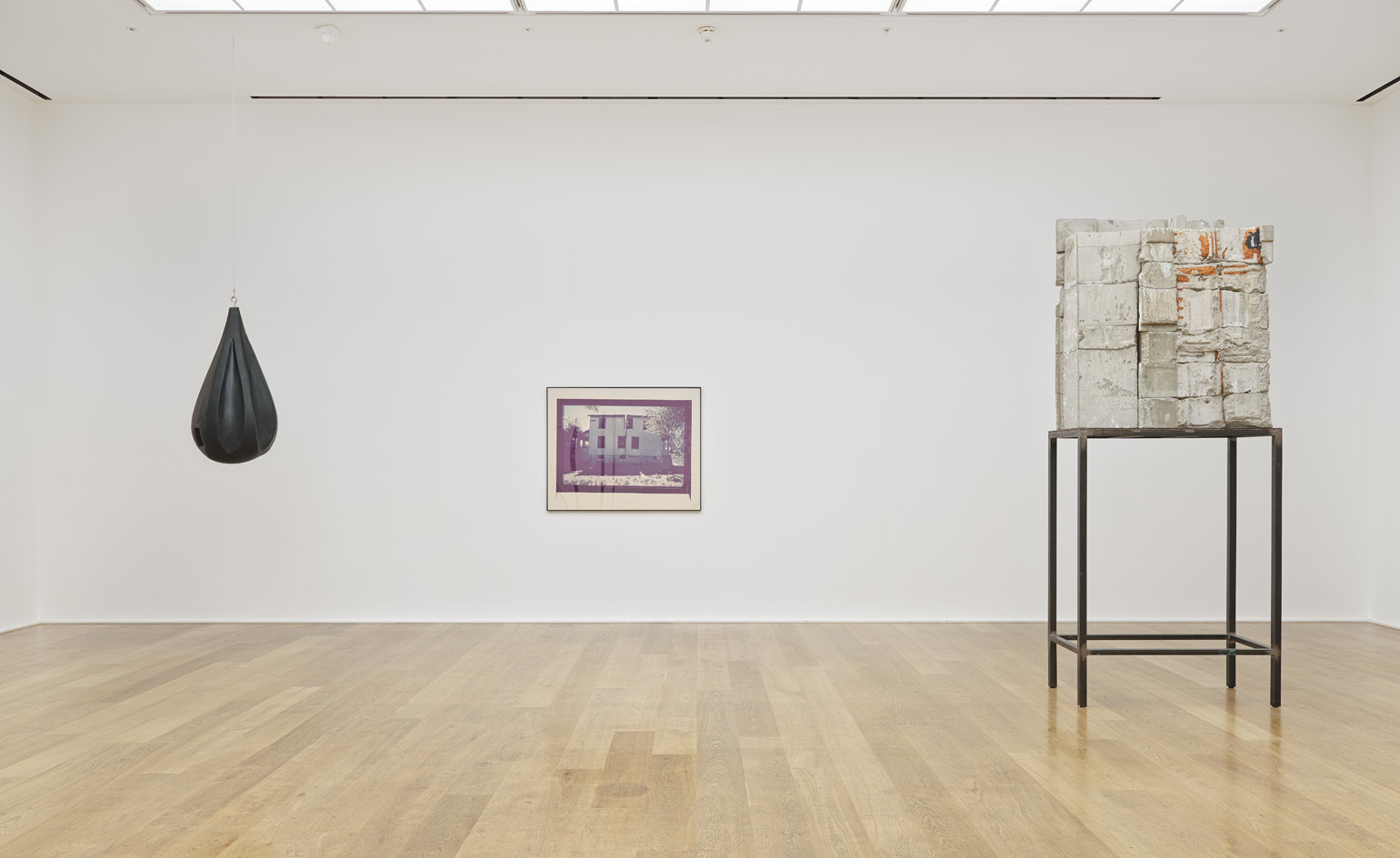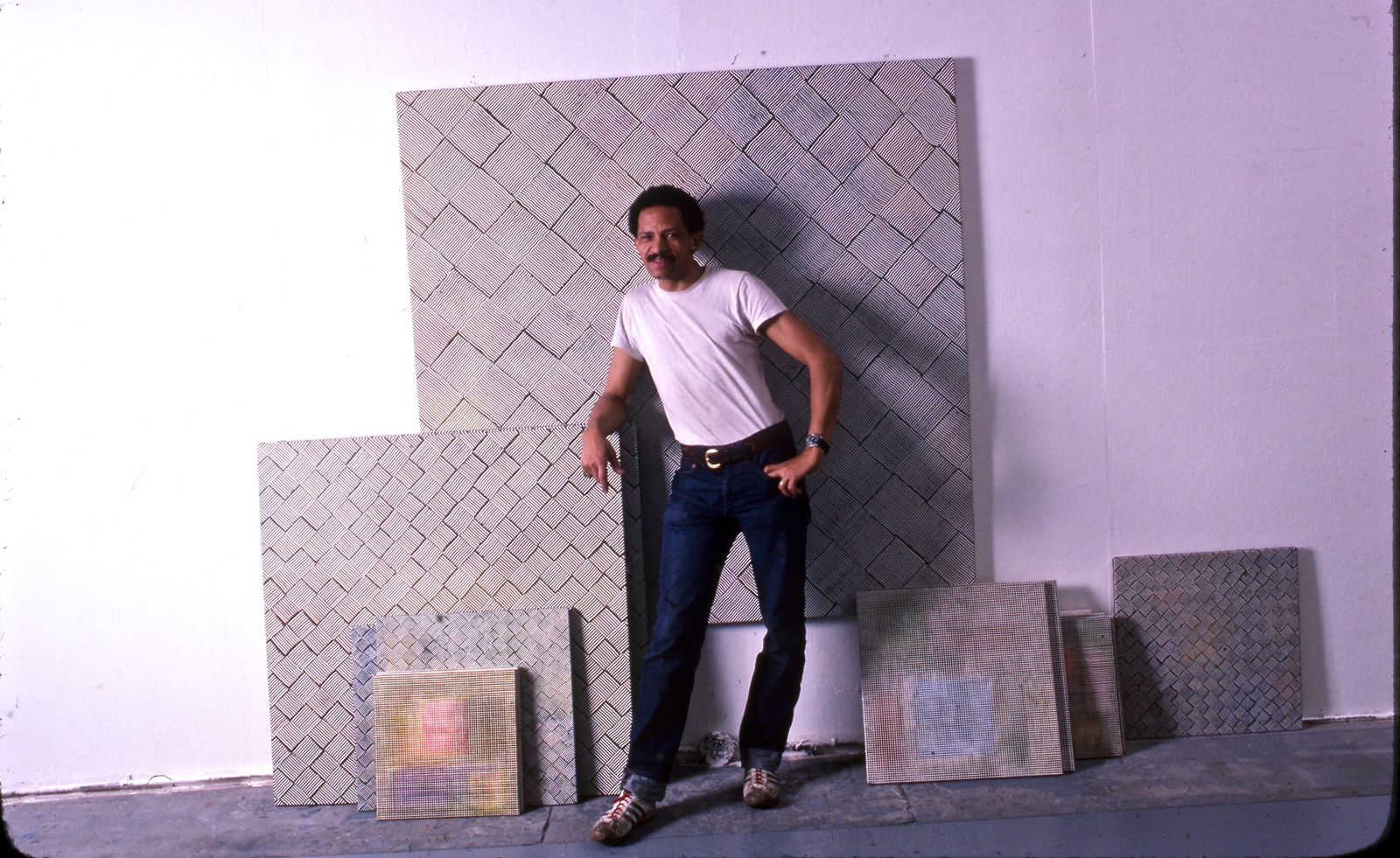’Maison Fragiles’: Hauser & Wirth’s new show is an ode to vulnerability
Hauser & Wirth London draws together the work of nine artists in ‘Maisons Fragiles’, a group exhibition exploring themes of fragility, vulnerability and protection

Louise Bourgeois' precariously balanced series of sculptures give the illusion of frailty, but on closer inspection a steel construction provides them with a hidden strength. Appearing like empty houses, the ‘Maisons Fragiles’ are a commentary on the solitude of domestic life, confronting the deeply repressed issues that conditioned her youth.
Now, the title of these poignant works has given birth to a new exhibition of the same name, currently on show at Hauser & Wirth London. Led by Bourgeois' steel houses, the exhibition encompasses the work of nine artists united by themes of fragility, vulnerability and protection.
Slightly bowed like glossy rose-tinted pools of liquid or blocks of ice, Roni Horn's translucent glass sculptures Two Pink Tons, 2008, sit in the centre of the smaller gallery space, appearing as if suspended in time and space. On the adjacent wall, Richard Serra's flat corten wall sculpture, Untitled, 1975, with its time-work patina, is a manifestation of the artist's interest in the collision of matter and space.

Encompassing work spanning 60 years of artistic practice, the exhibition includes pieces by Louise Bourgeois, Alexander Calder, Isa Genzken, Robert Gober, Eva Hesse, Roni Horn, Gordon Matta-Clark, Fausto Melotti and Richard Serra

Louise Bourgeois' Maisons Fragiles, 1978, a precariously balanced series of sculptures that lends its name to the title of the exhibition, confronts the deeply repressed issues that conditioned the artist’s youth

Slightly bowed like glossy rose-tinted pools of liquid or blocks of ice, Roni Horn's translucent glass sculptures Two Pink Tons, 2008, sit in the centre of the smaller gallery space

On the adjacent wall, Richard Serra's flat corten wall sculpture, Untitled, 1975, is a manifestation of the artist's interest in the collision of matter and space

Isa Genzken's rough-hewn concrete forms appear like crumbling brutalist architectural models (pictured left), while Fausto Melotti’s I lavandai (The Launderers), 1969, encapsulates the artist’s lyrical approach to sculpture, drawing on the lightness and tactility of the delicate materials from which it is crafted (pictured right)

Pictured centre: in Gordon Matta-Clark's Splitting, 1974, a suburban house in New Jersey is cut with a chainsaw and rearranged, creating unexpected apertures and incisions
INFORMATION
’Maisons Fragiles’ is on view until 6 February. For more information visit Hauser & Wirth’s website
Photography courtesy the artists and Hauser & Wirth
ADDRESS
Hauser & Wirth London
23 Savile Row
London, W1S 2ET
Receive our daily digest of inspiration, escapism and design stories from around the world direct to your inbox.
Ali Morris is a UK-based editor, writer and creative consultant specialising in design, interiors and architecture. In her 16 years as a design writer, Ali has travelled the world, crafting articles about creative projects, products, places and people for titles such as Dezeen, Wallpaper* and Kinfolk.
-
 ‘I want to bring anxiety to the surface': Shannon Cartier Lucy on her unsettling works
‘I want to bring anxiety to the surface': Shannon Cartier Lucy on her unsettling worksIn an exhibition at Soft Opening, London, Shannon Cartier Lucy revisits childhood memories
-
 What one writer learnt in 2025 through exploring the ‘intimate, familiar’ wardrobes of ten friends
What one writer learnt in 2025 through exploring the ‘intimate, familiar’ wardrobes of ten friendsInspired by artist Sophie Calle, Colleen Kelsey’s ‘Wearing It Out’ sees the writer ask ten friends to tell the stories behind their most precious garments – from a wedding dress ordered on a whim to a pair of Prada Mary Janes
-
 Year in review: 2025’s top ten cars chosen by transport editor Jonathan Bell
Year in review: 2025’s top ten cars chosen by transport editor Jonathan BellWhat were our chosen conveyances in 2025? These ten cars impressed, either through their look and feel, style, sophistication or all-round practicality
-
 Artists imbue the domestic with an unsettling unfamiliarity at Hauser & Wirth
Artists imbue the domestic with an unsettling unfamiliarity at Hauser & WirthThree artists – Koak, Ding Shilun and Cece Philips – bring an uncanny subversion to the domestic environment in Hauser & Wirth’s London exhibition
-
 Cindy Sherman in Menorca: ‘She's decades ahead of social media and the construction of identity for the camera’
Cindy Sherman in Menorca: ‘She's decades ahead of social media and the construction of identity for the camera’‘Cindy Sherman: The Women’, its title a nod to an image-conscious 1930s Broadway hit, takes the American artist's carefully constructed, highly performative works to Hauser & Wirth Menorca
-
 Alice Adams, Louise Bourgeois, and Eva Hesse delve into art’s ‘uckiness’ at The Courtauld
Alice Adams, Louise Bourgeois, and Eva Hesse delve into art’s ‘uckiness’ at The CourtauldNew exhibition ‘Abstract Erotic’ (until 14 September 2025) sees artists experiment with the grotesque
-
 What is recycling good for, asks Mika Rottenberg at Hauser & Wirth Menorca
What is recycling good for, asks Mika Rottenberg at Hauser & Wirth MenorcaUS-based artist Mika Rottenberg rethinks the possibilities of rubbish in a colourful exhibition, spanning films, drawings and eerily anthropomorphic lamps
-
 See the fruits of Niki de Saint Phalle and Jean Tinguely's creative and romantic union at Hauser & Wirth Somerset
See the fruits of Niki de Saint Phalle and Jean Tinguely's creative and romantic union at Hauser & Wirth SomersetAn intimate exhibition at Hauser & Wirth Somerset explores three decades of a creative partnership
-
 The Tate Modern is hosting a weekend of free events. Here's what to see
The Tate Modern is hosting a weekend of free events. Here's what to seeFrom 9 -12 May, check out art, attend a lecture, or get your groove on during the museum's epic Birthday Weekender
-
 Inside the distorted world of artist George Rouy
Inside the distorted world of artist George RouyFrequently drawing comparisons with Francis Bacon, painter George Rouy is gaining peer points for his use of classic techniques to distort the human form
-
 Inside Jack Whitten’s contribution to American contemporary art
Inside Jack Whitten’s contribution to American contemporary artAs Jack Whitten exhibition ‘Speedchaser’ opens at Hauser & Wirth, London, and before a major retrospective at MoMA opens next year, we explore the American artist's impact